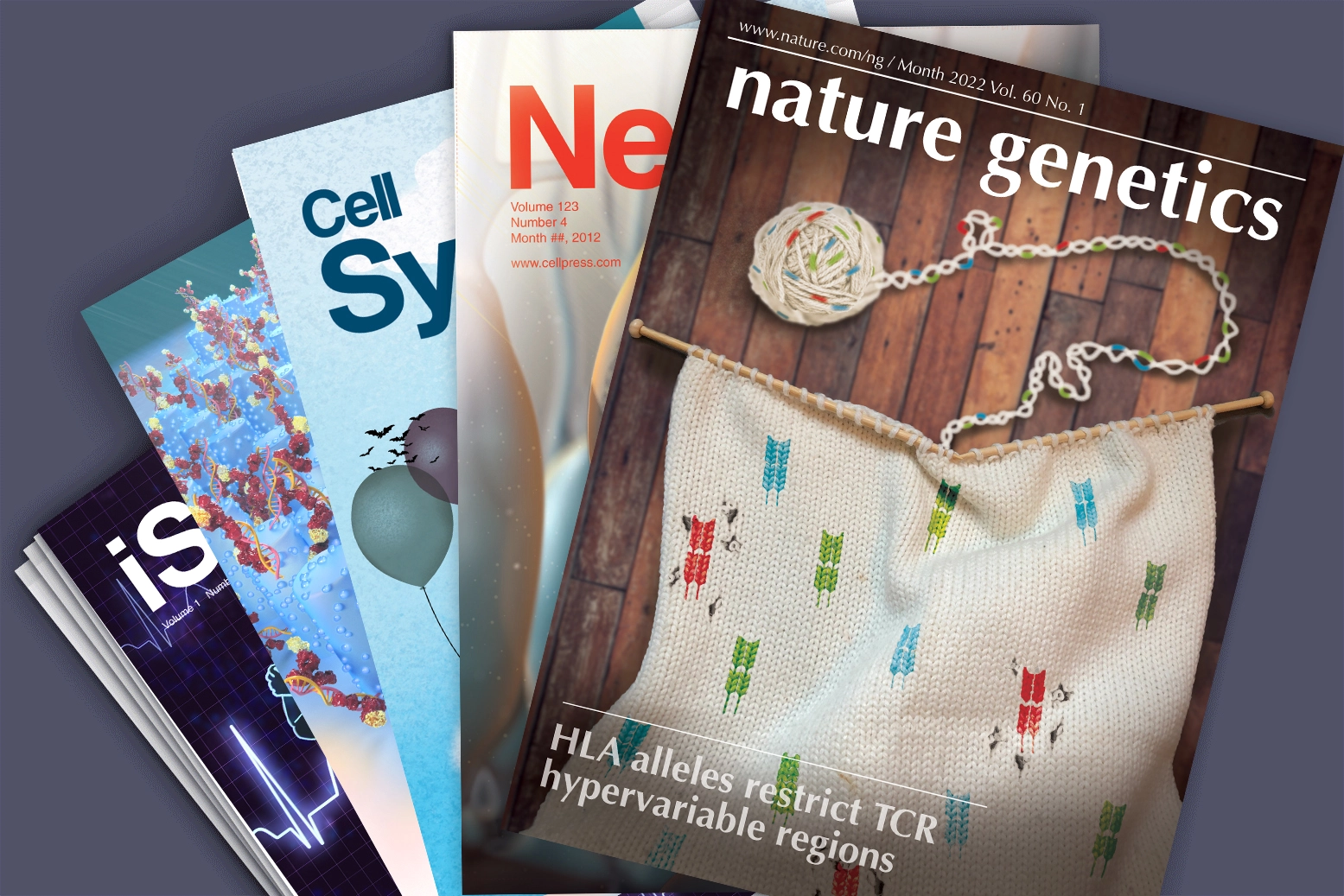Being selected for a journal cover is a great honer. It’s a validation of your research, especially if it comes from a respected journal. Not everyone is given this honor, and sometimes, the opportunity only comes once. Evidence also shows that it has a proven impact on article usage metrics. Having your work featured as the journal cover leads more people to read about your research. It also opens doors to speaking engagements and becomes an excellent addition to your CV.
When given this opportunity, the best step forward is finding a professional to craft a journal cover artwork . Professional medical illustrators are skilled artists who use their knowledge of science, medicine, and technology to create accurate and artistic illustrations for various purposes, including journal cover artwork.
While it’s tempting to rely on stock images or DIY design software, enlisting the services of a professional medical illustrator ensures you have a visually appealing and scientifically accurate journal cover. The final output will also enhance your credibility and the professionalism of the publication.
So, what are the process and best practices to maximize the opportunity for creating a journal cover? Check out the list below.
Best Practices for Working with a Medical Illustrator

Example journal cover we’ve worked on in the past
It may be intimidating to work with a medical illustrator and trust them to convey your ideas. However, following the best practices below will ensure you get the perfect journal cover artwork that represents your research and brings you pride.
Observe proper timing.
As a general rule of thumb, the more time medical artists can have, the more likely they can produce higher-quality art. Ideally, we ask for a full month to prepare the cover art to aim for the best possible outcome.
However, we understand that most researchers only receive last-minute invitations to submit journal artwork covers. While medical artists will accept the usual 2-week timeline, this can be more costly and too rushed to cultivate solid ideas and execute quality renders. As a workaround, researchers can take proactive measures to find out if the publications accept early journal cover submissions.
Some academic journals accept journal cover submissions publicly, even without an invitation.. Some extend their invitation during the “acceptance in principle” stage when editing is still taking place. It is possible to find out your journal’s submission deadline by searching “submit cover artwork” along with the name of the journal you wish to publish in. Additionally, you can ask the editors beforehand about how to ensure that you’ll have sufficient time to produce a high-quality cover. Knowing this information will help you approach medical artists in advance and give them enough time to develop the artwork. This will increase your chances of having a stellar journal cover artwork.
Approach a medical illustrator with ideas of your own.
During the initial meeting, go over the summary of the accepted manuscript with the medical illustrators, so they’d understand the concept behind the science. After all, researchers know their field and the science behind it, making them the best resource an illustrator could have.
Illustrators will conduct their own research but understanding your work from your point of view will point them in the right direction. You can also share as much information as possible with the artists, even those unrelated to the science itself. These can include an analogy to the mechanism presented in the research, your favorite journal covers from various publications, your preferred artistic style, and other details that will help them create a unique artwork reflective of your research and personality.
Giving illustrators as many ideas as possible can help shape the artwork into something visually stunning and memorable.
Commit to the sketch.
After the initial meeting, the artists will proceed with their research and create sketches, incorporating what they’ve learned and the clues they gathered from the initial discussion. They’ll present these sketches and ask you to accept one. The accepted sketch will be developed into a full-blown artistic illustration.
Once you’ve selected a sketch, sticking to the agreed-upon idea is recommended, even if you come up with another later. Many thoughts go into developing a concept, both scientifically and artistically, and the intricateness of the two disciplines is key to creating a good cover artwork. Changing your mind later in the development stage typically leads to getting a half-baked final illustration.
Once a sketch is presented, minor edits to the original idea are acceptable. It’s important to share your ideas and communicate all relevant information when the cover is still being conceptualized. The illustrators will take any minor edits into account before creating the final artwork. Remember also that there’s a deadline for the submission, and you don’t want to risk an artwork being unfinished because of too many revisions.
Allow for some artistic license.
Finally, the medical artists will deliver the final artwork. After a month of discussions, research, idea development and renditions, the journal cover artwork would be ready. At this stage, minor adjustments are allowed. You can still present your ideas and comments for the illustrators to work on.
Remember to give the illustrators enough artistic license to be creative. After all, they are visualizing a concept, and some compromise is inevitable to make the final artwork harmonious or for the story to make sense. In artistic renditions, perfect accuracy may not always serve the greater purpose of education. For example, specific shapes or colors may enhance understanding or highlight key structures.
Trust that as experienced professionals, medical artists know what they’re doing, and any artistic license taken remains accurate to your research. Leaving room for a creative license can go a long way in producing an engaging cover that encourages readers to learn about your work.
Achieve an Artistic Journal Cover Artwork That You Can Be Proud Of
You’ve dedicated time and sweat to your research, and it’s now ready for publication. You’re excited to tell the world about your findings and have been invited to grace the journal cover. Don’t waste the opportunity by settling for an ill-conceived illustration. Working with a professional medical illustrator is your best bet for getting high-quality, accurate art that will make your research stand out from the rest. Follow the best practices above to achieve a final product that meets your expectations and needs.
If you’re looking for professional medical artists to help you with your journal cover artwork, visit If you need high-science graphic content, visit maomiyamoto.com to discuss your needs and get to get started.
